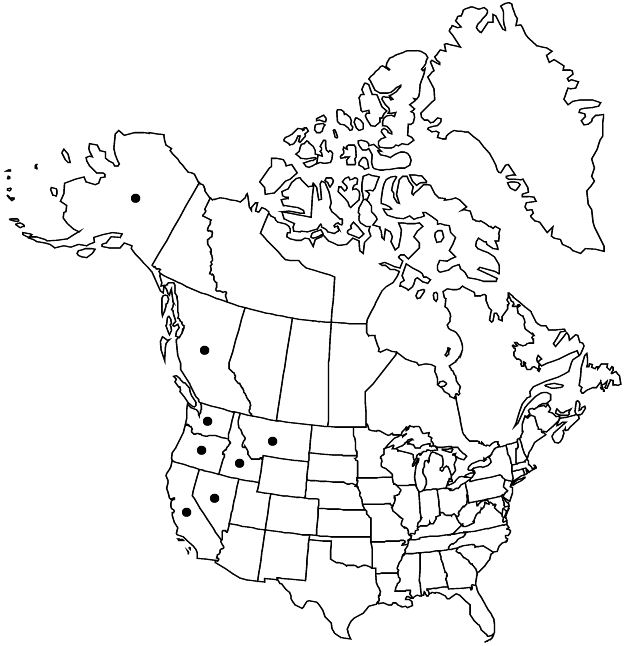Cornus occidentalis
Contr. U.S. Natl. Herb. 4: 117. 1893.
Shrubs, to 3 m, flowering at 1 m; rhizomes absent. Stems clustered; bark green to maroon or reddish-brown, not corky, loosely verrucose; branchlets red, reddish-brown, maroon, or green, mostly erect-hairy when young; lenticels protruding on 2d year branches, area surrounding them not suffused with purple on older branches; pith white. Leaves: petiole 10–20 mm; blade ovate, 5–12 × 2–6 cm, base cuneate to rounded, apex slightly acuminate, abaxial surface white, hairs erect, especially dense near midvein, tufts of erect hairs present in axils of secondary-veins, vein hairs brown, appressed, adaxial surface green, hairs appressed; secondary-veins 6–7 per side, most arising from proximal 1/2, tertiary-veins not prominent. Inflorescences flat-topped, 3–6 cm diam., peduncle 20–40 mm; branches and pedicels maroon. Flowers: hypanthium densely erect-hairy; sepals 0.3–0.7 mm; petals white, 3.5–4 mm. Drupes white, globose, 8 mm diam.; stone oblate-ellipsoid, 4–5 × 5–7 mm, with 3 ridges on each face, furrowed laterally, apex pointed.
Phenology: Flowering May–Jun and Sep–Oct; fruiting Aug–Oct.
Habitat: Wet meadows, bogs, marshes, stream banks, lake shores, river banks.
Elevation: 0–2000 m.
Distribution

B.C., Alaska, Calif., Idaho, Mont., Nev., Oreg., Wash.
Discussion
F. R. Fosberg (1942) and H. W. Rickett (1944b) examined variation within the Cornus sericea complex in North America. Fosberg regarded the whole complex as a single species, stating that the differences in indumentum were not sufficient to distinguish two taxa. In contrast, Rickett concluded that there were two species, C. occidentalis and C. sericea, and that treatment is followed here.
The illegitimate name Cornus pubescens Nuttall has sometimes been used for this species.
Selected References
None.